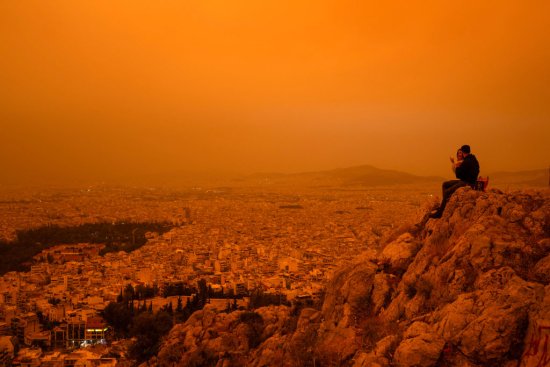
Historic landmarks in Athens were blanketed in orange courtesy of a Sahara desert storm.
Dust clouds from the Sahara desert in North Africa have blown across the Mediterranean Sea and turned Greece’s sky orange on Tuesday. Historic landmarks in the country’s capital Athens, including the ancient citadel of Acropolis, were blanketed in orange dust.
One image, taken from the famous Tourkovounia hills that bisect the city of Athens, shows a man in a face mask taking a photo of the Mars-like view of the city. A second man on a bike can be seen nearby.
Another image shows several people sitting on a cliff, having made the journey to the Tourkovounia hills by car and motorcycle to catch a glimpse of the unusual view. You can see the city’s ancient architecture covered under an orange glow.
[time-brightcove not-tgx=”true”]

While the orange-covered scenes might look striking, dust clouds from the Sahara do come with health risks, especially for people with asthma or underlying health conditions. The CDC recommends staying indoors as much as possible when Saharan dust is concerned, since exposure can increase your risk for respiratory disorders and cardiovascular events.
“It’s one of the most serious episodes of dust and sand concentrations from the Sahara since March 21-22, 2018, when the clouds invaded the island of Crete in particular,” Kostas Lagouvardos, a weather research director at the Athens Observatory said, per The Guardian.
The winds that blew the Sahara dust to Greece also appear to be causing an increase in wildfires. There were 25 brush fires reported by the country’s national first responders, the Hellenic Fire Department, on Tuesday. The skies are expected to clear up later in the day on Wednesday, as winds blow the dust away.